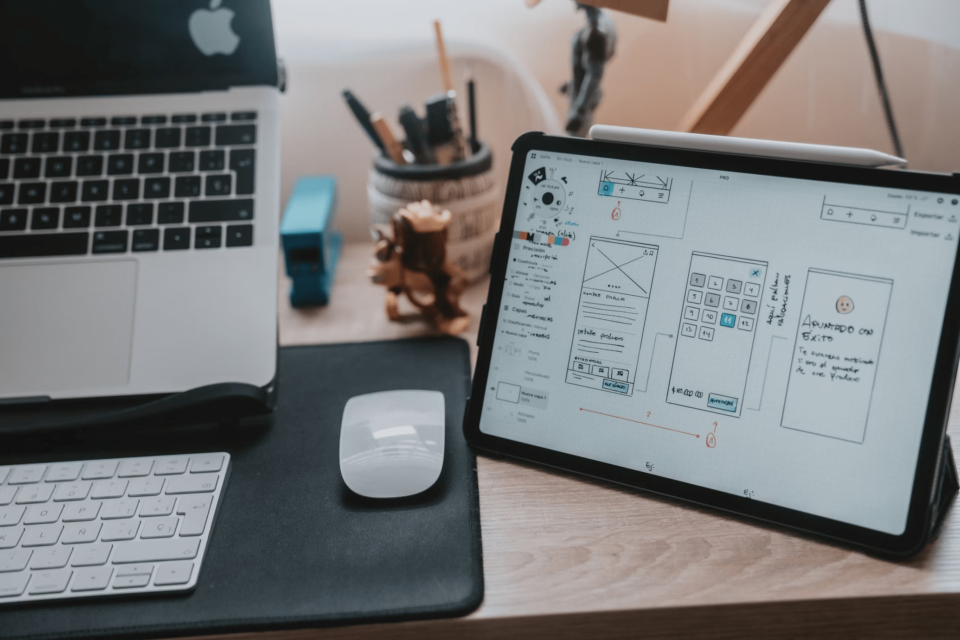From improving go-to-market efficiency and fueling data-driven market insights to aiding product design and allowing product personalization and modification, the list of benefits of using generative AI is always expanding. Here are some of the most perspective applications of artificial intelligence in product development.
Converting Customer Feedback into Product Ideas and Updates
AI may collect and evaluate customer feedback input to find issues, suggestions, and new product ideas. Brands often collect feedback via several channels, such as product ratings and reviews, focus groups, social listening efforts, and so on. Additionally, brands may use AI algorithms to process and evaluate these data points. Thus, they will be able to easily spot emerging trends and competition insights, come up with new product ideas, and generate product optimization ideas.
#1 — Market Research and Trend Analysis
AI, like the process of converting customer input into product ideas and updates, may also be used to collect and digest market research and trend analysis. Brands may get the most recent information about the ever-changing industry and react to purchasing patterns in order to remain strategically relevant in the market.
#2 — Product Design and Prototyping
Brands are increasingly relying on AI to fuel the product design and prototyping processes, employing AI algorithms to generate new product ideas and aid in ideation and brainstorming. Many companies are going one step further with GenAI design, including first-party consumer data, customer feedback, and industry trends and insights into their prompts to predict future product development requests and requirements.
#3 — Product Personalization and Customization
Personalization in e-commerce is becoming increasingly popular these days, with Salsify consumer research revealing that 70% of U.S. buyers are more inclined to purchase an item if it has “personally relevant” photos, detailed descriptions, and reviews from real customers. Generative AI might be used to produce goods that cater to users’ particular interests and wants, allowing them to curate and build things within their own limits.
Examples of Using Generative AI in Product Development
With so many outstanding benefits, it is no wonder that so many companies are starting to use generative AI. Thus, several heritage businesses are already using (or intend to use) AI in their product prototyping and development. As with all new technologies, this test-and-learn method enables organizations to attract customers’ attention with novel ideas while swiftly determining what drives engagement — and, eventually, purchases. Here are some instances of companies making AI a part of their product development processes.
The Coca-Cola Company Predicts the Future Using AI
The Coca-Cola Company introduced Coca-Cola Y3000, a limited edition taste developed in collaboration with human and artificial intelligence to better comprehend “how fans envision the future through emotions, aspirations, colors, flavors, and more.” The company gathered data from its consumers throughout the globe, coupled it with AI insights, and created a novel flavor that forecasts what future palates would appreciate — giving buyers a “chance to taste the year 3000 today.”
Fashion House FINESSE Uses Artificial Intelligence to Drive Demand and Sustainability
The FINESSE company claims to be the first “AI-driven fashion house,” integrating its proprietary artificial intelligence algorithms for clothes design with a customer voting process that selects which products will be made and how much will be produced depending on demand. This combination of AI and consumer data enables the company to minimize overproduction and favor goods with known appeal, all while eliminating the conventional testing period for new product releases.
Estée Lauder Accelerates Their Product Development Process Using AI
Estée Lauder is expanding its use of generative AI to enhance the customer experience across its brand sites, leveraging AI-powered solutions to “better understand consumer sentiment, adjust their research and development efforts, and translate the magic of prestige beauty brands into top-in-class, high-touch digital experiences.”
AI-Driven Product Development Improves Digital Shelf Success
Brands that use the potential of AI throughout the product development process have immense opportunities. Generative AI may accelerate the product development process by providing up-to-date market information and strategic product feedback, as well as offering product customization options. To achieve digital shelf success, stay ahead of the competition by keeping up with buyers’ constantly changing wants and providing compelling shopping experiences that include things they desire now and in the future.
